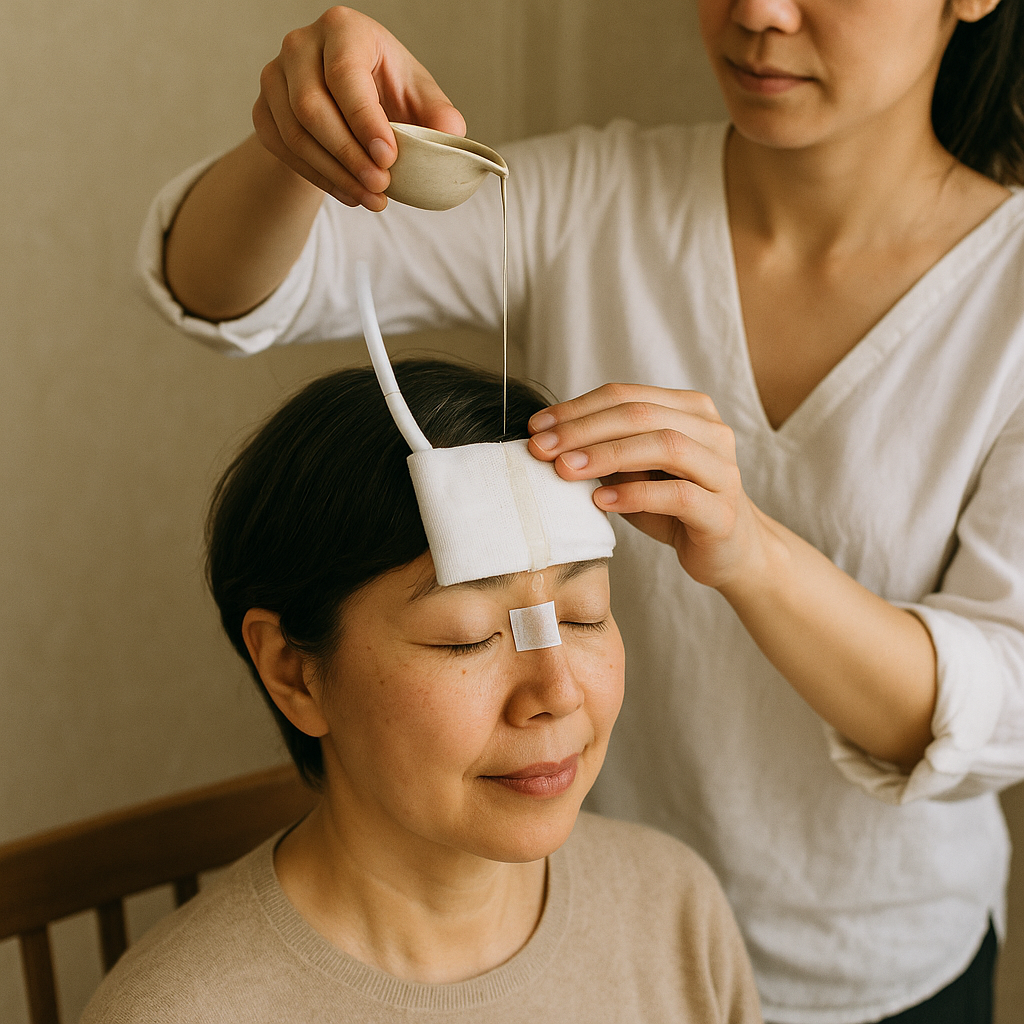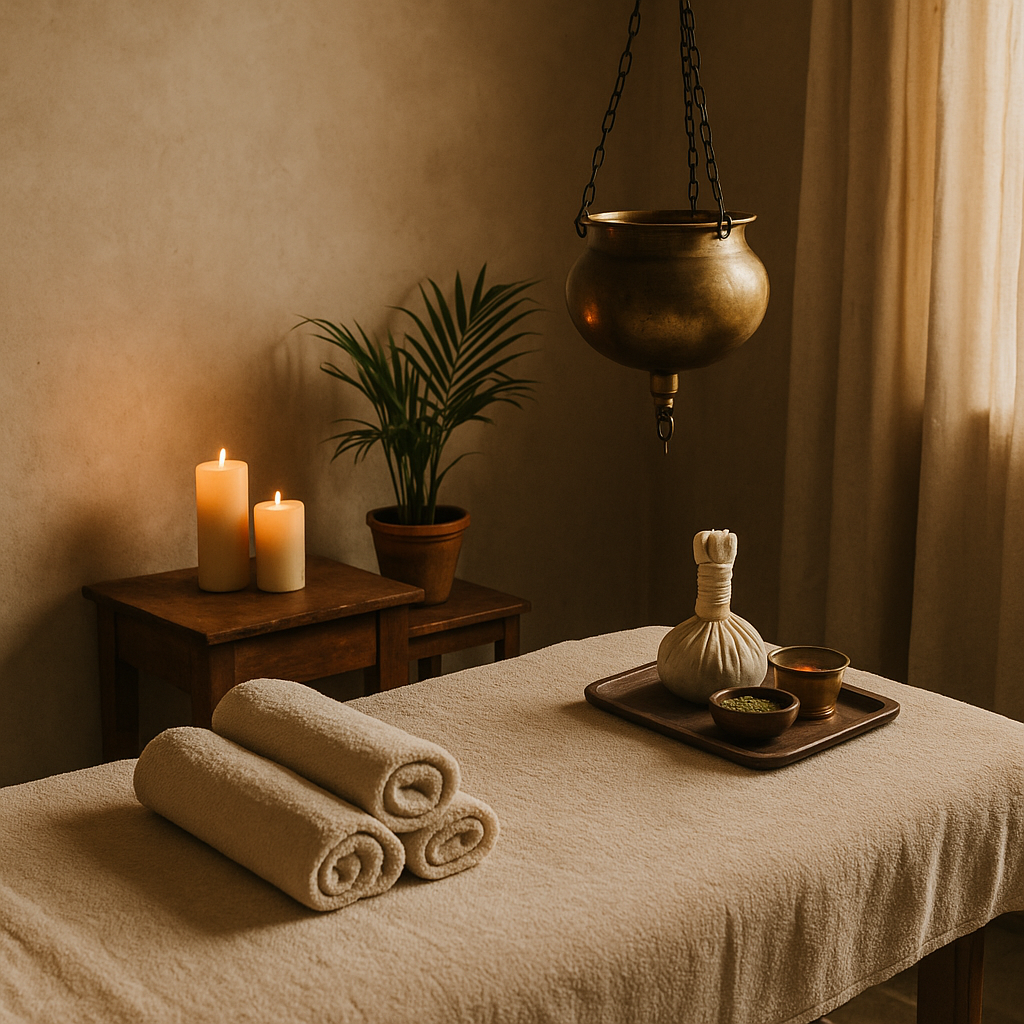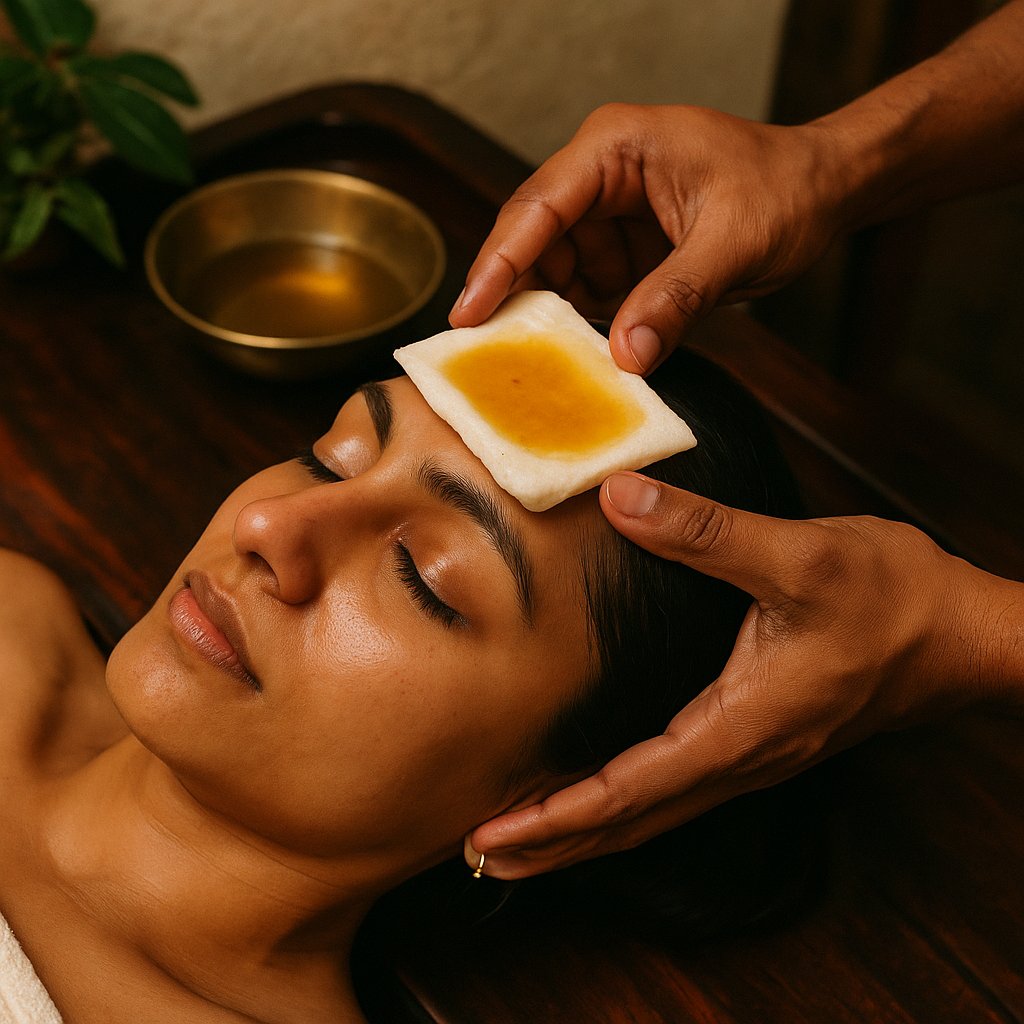Ask Ayurvedic doctor a question and get a consultation online on the problem of your concern in a free or paid mode. More than 2,000 experienced doctors work and wait for your questions on our site and help users to solve their health problems every day.
Shop Now in Our Store
Pichu in Ayurveda: Therapy Types, Oils, and Healing Benefits

Ayurveda, the ancient science of life, holds an ocean of timeless therapies designed to nurture, repair, and rebalance. Among them, pichu in Ayurveda is one of the lesser-known but deeply restorative oil-based treatments. If you’ve ever wondered what is pichu in Ayurveda, or how it fits into the larger scope of Ayurvedic healing, you’re in for a pleasant surprise. This therapy isn’t just about pouring oil; it’s a thoughtful process aimed at calming the nervous system, alleviating pain, and bringing harmony to both the body and mind.
From shiro pichu therapy for mental stress, to yoni pichu in Ayurveda for reproductive wellness, pichu’s gentle nature makes it suitable for a wide range of conditions. In this article, we’ll dive into what pichu therapy really is, explore its variations like kati pichu, janu pichu, and learn how different oils are used to bring healing. Whether you’re an Ayurvedic enthusiast or just Ayur-curious, this guide will help you understand why this humble treatment might deserve a place in your wellness routine.

What Is Pichu in Ayurveda
Pichu Meaning and Purpose
So first things first — what is pichu in Ayurveda? At its core, pichu is a localized treatment that involves soaking a piece of cotton or cloth in warm, medicated oil and placing it on a specific part of the body. Simple, right? But don’t be fooled by its simplicity — it’s incredibly powerful when done right.
The main goal of pichu ayurveda is to deliver deep nourishment directly to tissues (called dhatus) that need attention. Whether it's the lower back, knees, head, or even intimate areas, this method allows targeted healing. It's especially valued for its calming effect on vata dosha, which governs movement, pain, and the nervous system. When vata is imbalanced, pain, dryness, and restlessness tend to creep in — pichu helps settle that down.
Pichu vs. Other Oil Therapies
Unlike abhyanga (full-body oil massage) or shirodhara (streaming oil on the forehead), pichu therapy is hyper-focused. Instead of treating the whole body, it hones in on one affected area at a time. This can make it even more effective for issues like chronic joint pain, localized inflammation, or menstrual imbalances. And unlike some other treatments, it doesn’t always require a spa — with proper guidance, it can even be done at home (more on that later).
How Pichu Therapy Works
Pichu ayurvedic treatment functions through a simple yet potent mechanism. Warm oil, infused with herbs specific to the condition, is absorbed through the skin and enters deeper layers of tissue. The warmth opens up the pores, allowing the medicated oil to seep into joints, muscles, and nerves.
This process not only lubricates dry tissues but also helps eliminate toxins (ama) that may be lodged in the area. It’s a perfect blend of detox and nourishment, done with grace and care. Depending on the type — like shiro pichu for the head or yoni pichu for the reproductive system — the method and oils used will vary slightly, tailored to the individual's constitution (prakriti) and imbalance (vikriti).

Types of Pichu Treatment and Their Uses
Shiro Pichu
One of the most calming forms, shiro pichu therapy involves placing an oil-soaked cotton pad on the crown of the head. It’s used to treat stress, insomnia, anxiety, and migraines. The head is a sensitive energetic point in Ayurveda, and treating it with oil soothes overactive mental energy — ever feel like your brain’s on fire? This helps cool it down.
Kati Pichu
Kati pichu targets the lower back (the kati region). It’s a go-to for sciatica, lumbar spondylosis, and general lower back stiffness. This method can help relieve chronic pain and improve flexibility. In fact, some folks start feeling relief just after one or two sessions, although it’s not a magic bullet — consistency matters.
Janu Pichu
Janu pichu is all about the knees. Whether it’s arthritis, injury recovery, or just age-related degeneration, this pichu application delivers strength and lubrication to the knee joints. It’s often recommended for athletes, older adults, or anyone with knee pain that’s more than just occasional.
Yoni Pichu
Perhaps the most delicate and specialized form, yoni pichu in Ayurveda is a treatment for women’s reproductive health. A sterile cotton pad soaked in yoni pichu oil is inserted vaginally, allowing herbs to nourish the uterus, vaginal walls, and surrounding tissues. It’s used for issues like irregular periods, dryness, and even fertility support.
This one needs to be done under the supervision of an experienced practitioner, since internal applications require extra care. Still, the yoni pichu benefits can be quite profound — many women report feeling more balanced, lubricated, and connected to their cycles.

Oils Used in Pichu Ayurvedic Treatment
The success of pichu ayurvedic treatment lies heavily in the oil used — it's not just any random oil, but carefully selected and prepared to suit specific conditions. In Ayurveda, oils aren’t just carriers; they’re potent healers in their own right. Each oil is infused with herbs through a process called sneha paka, designed to extract the therapeutic essence of the plant.
Yoni Pichu Oil and Application
For yoni pichu in Ayurveda, the oils must be especially gentle, nourishing, and supportive of the female reproductive system. Commonly used oils include:
-
Bala taila – strengthens pelvic muscles and nourishes tissues
-
Kshara taila – helpful in managing infections or imbalances
-
Yashtimadhu taila – cooling and anti-inflammatory
-
Ashoka oil – known for balancing menstrual irregularities
The application of yoni pichu oil is done by soaking a sterile cotton swab in the warm oil and gently inserting it into the vaginal canal. It is typically left in place for 20–30 minutes or as advised by a practitioner. Timing and duration depend on the individual's dosha and concern being addressed.
Medicated Oils for Pain and Nourishment
For shiro pichu, kati pichu, and janu pichu, oils like Mahanarayana taila, Ksheerabala taila, and Dhanwantharam taila are popular choices. Each has a distinct set of herbs — some focus on pain relief, others on reducing inflammation, and some are all about rejuvenation.
A small typo here or there is normal — humans are human, right? Anyway, what matters is the way these oils are matched with your body’s needs. Using the wrong oil can actually aggravate symptoms instead of helping, so that’s why working with a practitioner is highly encouraged. Seriously.

Benefits of Pichu Treatment for Body and Mind
Let’s talk about the pichu treatment benefits — and no, it’s not just about relaxation, though that’s a big one too.
Here are some of the key perks:
-
Targeted pain relief: Whether it’s your lower back screaming at you or your knees cracking like dry twigs, pichu therapy helps reduce inflammation and increase mobility.
-
Balances Vata dosha: Since Vata governs movement and nerve impulses, calming it brings huge benefits like better sleep, steadier moods, and reduced dryness.
-
Supports reproductive health: Especially with yoni pichu, women experience better menstrual regularity, less cramping, and improved vaginal health.
-
Reduces mental stress: With treatments like shiro pichu, the calming effect on the nervous system is profound. People literally feel their anxiety melt away.
-
Detox and nourishment: Pichu helps clear toxins from localized tissues while delivering deep nourishment to the same — it’s like a two-in-one.
Of course, don’t expect overnight miracles. Most benefits build over time, especially when combined with diet and lifestyle changes recommended by your Ayurvedic guide.
Pichu Massage and Its Role in Panchakarma
Ever heard of panchakarma? It’s Ayurveda’s deep detoxification process, and guess what — pichu massage plays a key support role in it.
Though pichu treatment isn’t considered a direct step in Panchakarma (like basti or virechana), it’s often used during the preparation and recovery stages. When done before main cleansing therapies, pichu helps soften the tissues, loosen toxins, and prepare the body for deeper detox.
After cleansing, pichu ayurveda aids in rebuilding strength, nourishing tissues, and bringing back balance. In a way, it acts like both the warm-up and the cool-down — and that’s kinda genius.
One thing to note — pichu can be combined with other Ayurvedic treatments like abhyanga, swedana, or nasya, but timing and sequencing matter. Trust your practitioner to guide you properly (or at least someone who knows their taila from their triphala).

When to Use Pichu and Precautions to Consider
Pichu therapy may sound gentle — and it usually is — but like all Ayurvedic treatments, it’s not a one-size-fits-all solution. There are right times to use it and times to hold off.
You might benefit from pichu ayurvedic treatment if you’re dealing with:
-
Chronic joint or muscle pain
-
Menstrual irregularities
-
Lower back stiffness
-
Anxiety, insomnia, or restlessness
-
Vaginal dryness or discomfort
But here’s the catch: if you're dealing with acute infections, fever, extreme ama (toxicity), or certain stages of pregnancy, pichu treatment might not be recommended. In such cases, even gentle oil therapies can do more harm than good. Always check with a qualified Ayurvedic practitioner before trying something new, especially things like yoni pichu that involve internal application.
Also, make sure the environment is warm, calm, and quiet. The oils should always be lukewarm — not hot. And hygiene matters big time, particularly with yoni pichu oil or anything inserted into the body. Do not — I repeat — do not use essential oils or kitchen oils just because they’re “natural.” That’s not how this works.
If you're going DIY, take precautions. Sanitize materials, patch test the oil, and watch for irritation or allergic response.
Conclusion
So, what have we learned about pichu in Ayurveda? A lot, actually. Whether it's shiro pichu for calming the mind, kati pichu for easing back pain, or yoni pichu in Ayurveda for nourishing the reproductive system, this therapy is a gentle yet mighty addition to your wellness toolkit.
Not only is it simple to administer in many cases, but it’s also deeply personal — tailored to your unique constitution and current imbalance. It brings together ancient wisdom, modern practicality, and real healing potential.
Incorporating pichu massage or therapy into your routine doesn’t mean giving up modern medicine. It’s not about choosing sides — it’s about listening to your body, embracing balance, and showing up for yourself in a deeper way.
Whether you’re new to Ayurveda or knee-deep in dosha charts, pichu ayurveda invites you to slow down, warm up, and let the oils do their magic.
FAQs
What are the side effects of Yoni Pichu?
Most women tolerate yoni pichu quite well, but there are possible side effects if the oil isn’t right for your dosha or if hygiene isn’t properly maintained. These could include irritation, itching, unusual discharge, or discomfort. Always use sterile materials and consult a practitioner before trying yoni pichu in Ayurveda on your own. And please — don’t use random store-bought oils. Just don’t.
How is Shiro Pichu different from Shirodhara?
Both treatments focus on the head, but they’re not the same. Shiro pichu uses a cotton pad soaked in warm oil placed on the crown of the head, while shirodhara involves a continuous stream of warm oil poured onto the forehead. Shiro pichu is more localized and still, whereas shirodhara is flowing and more immersive. Think of pichu as a focused spotlight and shirodhara as a gentle waterfall.
Is Pichu safe to do at home?
Sometimes, yes. Pichu therapy like kati pichu or janu pichu can be done at home with guidance and clean materials. However, treatments like yoni pichu or shiro pichu should ideally be done under supervision, especially the first time. Home treatments are best when you’ve been shown the right method by someone who knows their stuff — not just after watching a 3-minute video online 😉
How to insert Yoni Pichu?
Clean hands first. Then soak a sterile cotton swab in yoni pichu oil, warm it slightly, and gently insert it into the vaginal canal. It should sit comfortably and not cause pain. Leave it in for 20–30 minutes (unless directed otherwise), then remove it gently. Always follow up with proper cleansing and rest. Oh, and don’t do this during menstruation or infections — again, talk to a practitioner.
Ready to try pichu therapy or learn more about Ayurvedic healing? Share this article with someone curious about natural wellness or book a consultation with your local Ayurvedic expert. Your body might thank you — in Sanskrit.
This article is checked by the current qualified Dr Sujal Patil and can be considered a reliable source of information for users of the site.

